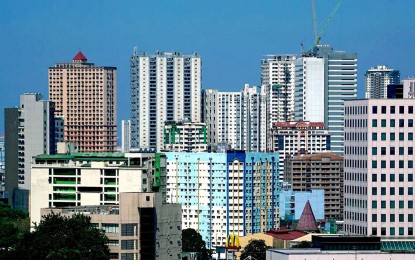By Joann Villanueva
An economist remains hopeful of a 5.5 to 6 percent growth for the Philippine economy this year, amidst the hike in US tariff rates, saying there are domestic factors that will bolster domestic expansion.
These include election spending for the May 2025 midterm polls, a manageable inflation rate, and additional cuts in the Bangko Sentral ng Pilipinas’ (BSP) key rates, the latter two of which are seen to boost domestic spending, are seen to counter any impact of higher US tariffs.
“Drag on Philippine GDP (gross domestic product) could be limited, as the Philippine economy is less reliant on exports as a source of economic growth. Philippine merchandise exports are three to five times lower compared to major ASEAN (Association of Southeast Asian Nations) countries on a yearly basis,” Rizal Commercial Banking Corporation (RCBC) chief economist Michael Ricafort said.
The US accounts for 17% of the Philippines’ total exports in 2024, and Ricafort said diversification to other developed countries in the Middle East, Europe, and the rest of Asia will help reduce reliance on the US as an export market.
Philippine Statistics Authority (PSA) data showed exports grew by 26.1% last June, faster compared to the previous month’s 15.5%, which Ricafort attributed to front-loading among US businesses ahead of the imposition of the 19% reciprocal tariff on Philippine exports starting August 1, 2025.
In turn, first quarter domestic growth, as measured by GDP, accelerated to 5.4% from the previous quarter’s 5.3%. Ricafort forecasts second quarter GDP at around 6%, due to election-boosted spending.
“For the coming quarters, an easing inflation trend below/near the lower end of the central bank target of 2-4% would support/justify future cuts in key policy rates/interest rates that would fundamentally lead to faster GDP/economic growth than otherwise,” he said.
“Easing inflation would also fundamentally lead to more disposable income that could support consumer spending, which accounted for nearly 75% of the Philippine economy/GDP,” he added.
The rate of price increases in the first half of this year averaged at 1.8%, with the June level accelerating to 1.4% from the previous month’s 1.3%. The lower-than-target inflation rate was cited by monetary officials as a factor for the two consecutive 25 basis points reduction in the BSP’ key rates as of June, with more eyed for the year.
To date, the BSP’s target reserve repurchase (RRP) rate is at 5.25%. (PNA)
